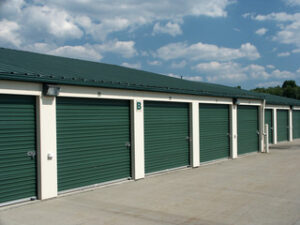Drywall Repair is an affordable and effective option for restoring walls damaged by dents, cracks, nail holes, water damage or other issues. Professional services include inspection and assessment followed by drywall patching, sanding, priming, and painting to match existing wall color. Contact Drywall Repair Phoenix for professional help.

Visual signs of drywall damage include stains, swelling or soft spots, cracks, and nail pops. Proper preparation is key to a successful repair process, including proper cleanup and supply selection.
Drywall is ubiquitous in modern homes and buildings, providing a fire resistant and inexpensive alternative to wood construction. But it doesn’t take much to damage drywall, which is why knowing how to patch holes and cracks is so important. Whether it’s from an accident or simply as a result of normal wear and tear, holes in drywall can occur in many different ways and must be repaired promptly to avoid water leaks or structural integrity issues.
Before beginning a drywall patch, you should clean the damaged area and make sure there are no loose particles. You’ll also want to make sure there are no hidden issues that may require further inspection or repair, such as electrical or plumbing problems. Once the damaged area is cleaned, a putty knife can be used to apply a thin layer of joint compound to the surface of the wall. Make sure the compound is spread evenly to cover all areas where the drywall patch will be placed.
After applying the drywall compound to the surface, you can place your drywall patch over it. Press firmly and ensure the patch is securely attached. If the patch has paper edges, it is important to slightly wet them before positioning the patch and applying pressure. This will help adhere the patch to the surface and prevent future cracking and peeling.
Once the drywall patch is in place, you can apply additional layers of joint compound to smooth out any rough areas and to prepare for painting. Sandpaper can then be utilized to smooth the sanded surface, which is critical for ensuring good paint coverage. Finally, the sanded area can be painted to match the surrounding surface of the wall.
If you have a hole in your wall that is larger than 6”, you can purchase a drywall patch kit that contains a reinforced patch with self-sticking tape. The kit can be a quick and easy solution to get rid of that pesky hole.
Repairing Large Holes
The first step in drywall repair is to visually inspect the damage. This includes looking for cracks, dents, holes, or discoloration. It’s also important to check the integrity of the drywall and studs. Upon inspection, it’s likely that the drywall needs to be replaced or repaired.
For small holes, a drywall patch kit is a great option. These kits typically include a metal patch with an adhesive backing. To use, simply remove the protective cover, cut the patch to the correct size and place in the hole. A layer of joint compound is then applied to the patch and sanded.
Large holes and dents require more extensive repairs. For this, it’s best to consult a professional. A trained technician can determine the cause of the damage and provide a proper solution. Drywall repair professionals can perform a complete inspection, assessment and restoration of the affected area. They can also handle the tape, mud, and paint process to ensure a seamless and high-quality finish.
For repairing large holes, it’s important to make sure there isn’t any wiring or plumbing behind the drywall. You can do this by using a framing square to mark cutting lines on the damaged area. Then, use a utility knife to trim the edges of the hole to create straight sides and a square or rectangular overall shape. Once the edges are straight, a drywall saw is used to cut away the damaged section of drywall.
If a new section of drywall is required, the old drywall should be cut out and removed, exposing the studs or framing behind it. Then, the replacement drywall can be cut to size and screwed in to the studs or framing with drywall screws. Using a level, make sure the replacement drywall is plumb and square before applying joint compound.
Apply a coat of joint compound to the patch, using a putty knife or trowel. Then, sand the surface of the patch smooth. After the patch is sanded, a second coat of joint compound can be applied, again allowing it to dry between applications. Once the second coat is dried, sand and feather the edge of the patch to blend with the rest of the wall. Lastly, sand and apply a fresh coat of primer or paint to the patched area.
Repairing Medium to Large Holes
Small cracks and nail pops can be a DIY project, but larger holes require more work. In this video, drywall expert Paul Silva shows how to repair medium-sized holes with an adhesive-backed patch. This approach is ideal for fixing holes caused by removed fixtures such as doorknobs or other moderate impacts. The process starts by cleaning the area and ensuring there’s no plumbing or wiring behind the hole. Next, cut the patch so that it’s a bit larger than the damaged area for sturdiness. Finally, apply a thin coat of joint compound over the patch and sand lightly.
Once the area is smooth, add a second layer of compound and feather it so that the edges blend into the wall. Allow the patch to dry completely before sanding again and painting.
It’s also important to do a visual inspection of the affected area before beginning any drywall repair to ensure that all areas are structurally sound. Look for any signs of damage, including soft spots or sagging. Additionally, probe the area with your hands to feel for any bumps or dents.
If you do spot any problems, make sure to contact a professional drywall contractor for a thorough inspection and repair. Their expertise and experience will ensure that your drywall repair is done correctly, saving you time and money in the long run.
A professional drywall contractor will begin with a thorough inspection of the damage to determine the best repair method. Then they will thoroughly clean and prepare the area, removing any loose debris and ensuring that all surfaces are free of moisture. Depending on the extent of the damage, it may be necessary to install wood backing strips or furring strips before proceeding with any drywall repair. Finally, the drywall repair will be completed using a combination of techniques, including patching, sanding, priming and painting. This will provide a high-quality, durable finish that lasts.
Repairing Small Holes
For small holes, you can use a drywall patch kit. These kits contain a self-adhesive mesh patch that sticks to the wall and covers the hole. This method is quick and easy but is not as strong as using a full piece of drywall. It is important to make sure that the edges of the patch are smooth, and that the surrounding drywall surface is properly sanded and primed before you apply the adhesive patch.
Small drywall cracks can also be repaired with spackle or a drywall compound, and then sanded and primed. If you want to repaint the area after repairing it, it is important that you choose paint that closely matches the existing color of the wall. It is a good idea to test the color in your home by painting a few chips of paint on the wall, or bringing a sample home from a paint store.
If you notice that a portion of your drywall has become discolored, this is another sign that it is time to repair it. Discolored sections of drywall are not only unsightly, but they can cause water damage and lead to mold and other issues that require professional drywall repair.
One way to prevent this problem is by installing a moisture barrier on the walls in high-risk areas, such as those near bathrooms and kitchens. You can also install a dehumidifier in the room to help reduce humidity levels.
For larger holes, a full drywall replacement is necessary. You should always use a stud finder to locate the studs behind the damaged drywall before cutting it out. Then, you can remove the old section and replace it with a new sheet of drywall. Once the new drywall is installed, it should be taped and mudded, and then sanded and primer/painted.
Drywall repairs can be simple for most homeowners, especially if you have the proper tools. However, if you have a large hole or notice other signs that your drywall needs to be repaired, it is best to call in a professional for a thorough assessment and installation.


